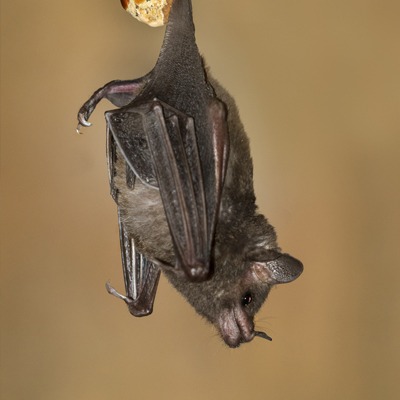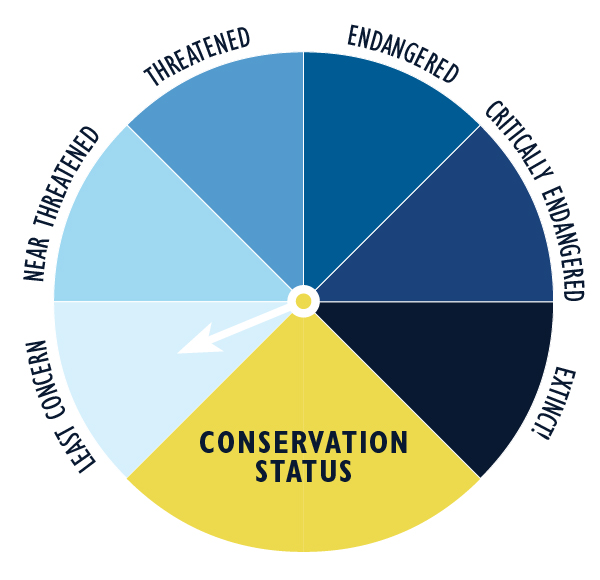
About Seba’s Short-Tailed Bat
Seba’s short-tailed bats are one of the world’s 1,200 bat species. These tiny, half-ounce bats are insectivores and frugivores, meaning they eat insects and fruits. They live in colonies of 10 – 100 and are most active after sunset.
Habitat
They are distributed throughout Central and South America and live in moist evergreen forests.
Diet
These bats eat at least 50 species of fruit, pollen, and insects.
Family Life
Seba’s short-tailed bats roost in groups of 10 – 100 in caves, hollow trees, tunnels, and road culverts. There are two types of roosts: harems, which consist of a male with many females, and bachelor roosts, consisting of males without a harem. Females usually give birth to one baby, which clings to the female with its teeth, wings, and claws. Babies reach adult size and can fly on their own in 10 – 13 weeks.
Conservation Status
The conservation status of the Seba’s Short-Tailed Bat is classified as least concern.
Threats
- Typically found in wildlife protected areas, there are currently no major threats facing this species.
- Although this species and many others in the Phyllostomidae (leaf-nosed bats) family are not currently facing major threats, their habitats are vulnerable to potential habitat destruction and deforestation.
Facts about Seba’s Short-Tailed Bat
Class:
Mammalia (mammals)Order:
Chiroptera (bats)Family:
Phyllostomidae (New World leaf-nosed bats)Genus:
Carollia (short-tailed bats)Species:
Carollia perspicillata (Seba’s short-tailed bat)Life Span:
Unknown (wild) / 12.5 years (zoo)Size:
1.9 – 2.75 inches (48 – 70 mm)Weight:
0.5 – 1 ounce (14 – 28 g)
Fun Facts
- Flying fruit farmers! These bats disperse seeds from fruits they eat while flying.
- The Seba’s short-tailed bat has a “nose-leaf”- a structure used to send out and interpret high-frequency sounds. The “nose-leaf” is located on a fleshy plate that surrounds the nasal passages and stands straight up behind the openings.











